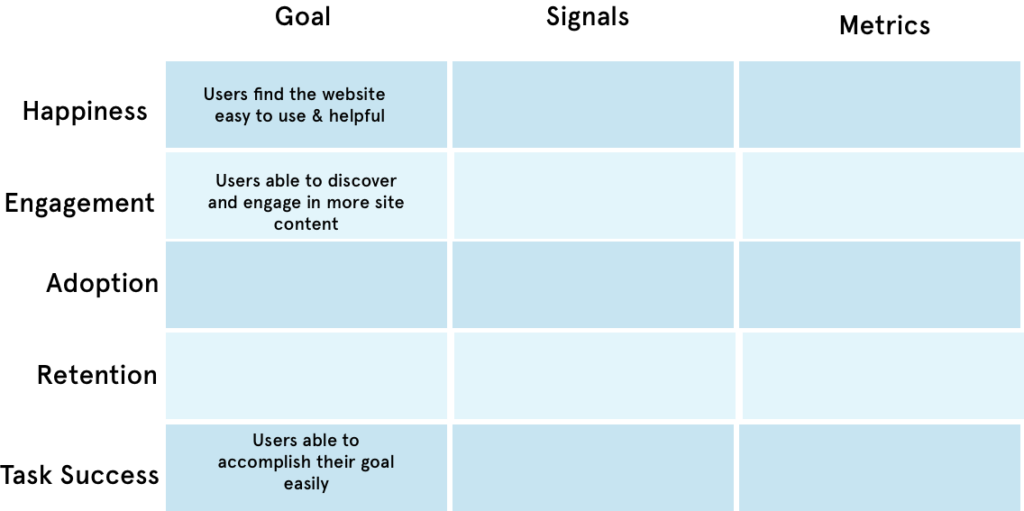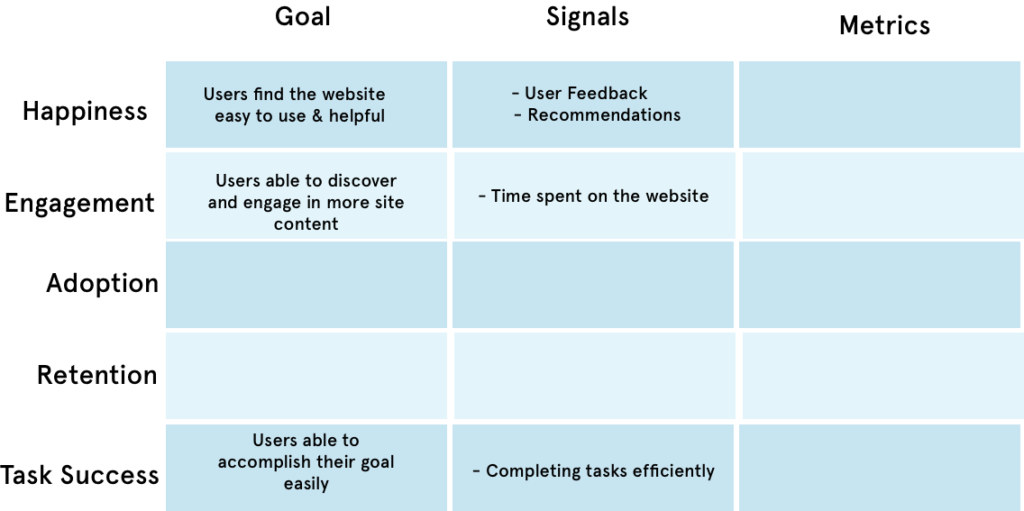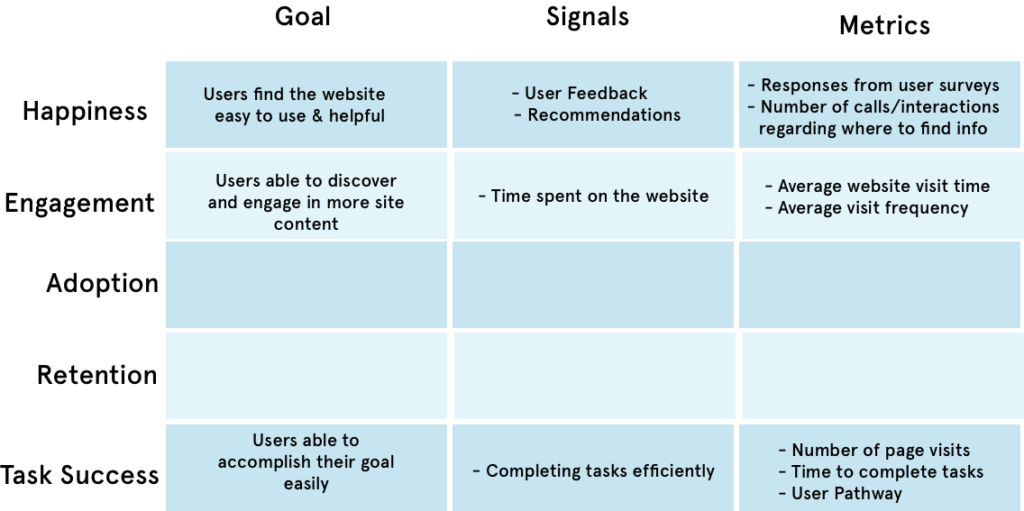The HEART Framework was created by 3 members of Google’s research department to help UX teams focus on specific dimensions of user experience that should be focused on for the project, and to identify goals and tools to track progress.
Using the Heart Framework to measure and track process can be broken down into 3 steps.
Step 1: Choose Dimensions To Focus On By Creating Goals
HEART Framework is a set of user-centric dimensions.
HEART is an acronym for:
Happiness – Users’ attitudes regarding product
Engagement – User involvement with project
Adoption – Rate of gaining new users
Retention – Number of returning users
Task Success – Effectiveness, Efficiency, and Ease of Use of the product
For a single project, it is recommended to form no more than 3 goals, in order ensure each goal is given sufficient time, focus, and thought. This step allows for group discussion to determine which categories should be prioritized for the project.
Ask questions such as
“Do we want our users to leave with a positive attitude towards our product?” – focus on Happiness
“How do we get users to spend more time on our site?” – focus on Engagement
“Do we want to acquire new us ers?” – focus on Adoption
“How do we keep our users coming back to our site?” – focus on Retention
“Do we want our website to be easy to use?” – focus on Task Success
Example of Step 1.)
Step 2: Map Signals to Goals
The next step is to think about what user actions would lead to a failure or success of those goals. Signals are defined as user actions that indicate whether a goal has been met or not. Ask yourself, what actions completed by the user will result in progress toward the goal you just created.
For example, a signal of Happiness would be if the user would recommend the product to others.
Step 3: Choose Metrics to Track Progress
The final step is to decide which tool or metric you will be using to track and monitor those signals. For example, if you are focusing on a Happiness goal, you may want to track it by including a Rating scale for users to give feedback. Or if you are focusing on a Task Success goal, you may want to measure the time it takes to complete a task or error rate.
Overall
The HEART Framework provides teams with a framework to brainstorm ideas over in order to establish the end goals of the project. It measures the overall quality of user experience by determining goals to measure key performance indicators. This methodology is flexible, as it could be applied to a whole product, or a single feature of that product.
References
Rodden, K., Hutchinson, H., & Fu, X. (2010, April). Measuring the user experience on a large scale: user-centered metrics for web applications. In Proceedings of the SIGCHI Conference on Human Factors in Computing Systems (pp. 2395-2398). ACM.
https://library.gv.com/how-to-choose-the-right-ux-metrics-for-your-product-5f46359ab5be
https:/clevertap.com/blog/google-heart-framework/




